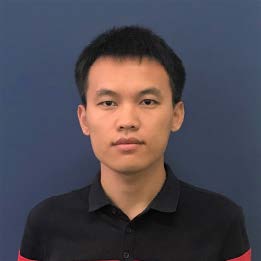Events
Featured Event

Autonomous Vehicles as Sensors (AVaS): Traffic State Estimation in the Operation of Mobility on Demand Services
Abstract Autonomous vehicles are rapidly becoming a central component of future mobility systems—but beyond enabling safe navigation, what else can...
Read MoreEvents
Agencies must maintain equitable access, even in low-demand areas, which can lead to costly, underused bus service. This study evaluates when those segments can be...
To explain persistent disparities in US electric vehicle adoption, this dissertation develops an innovative, scalable framework that models the mediating mechanisms of public perception in...
Multimodal freight transportation moves most goods across the United States, with trucks and railroads as the dominant modes. However, growing freight activity has raised concerns...
Over the last fifty years, transportation researchers have sought to develop stable day-to-day dynamical models to capture the convergence process toward a departure time user...
This dissertation uses large-scale data to analyze shared micromobility systems (SMS), such as dockless scooters and bikes. Through a combination of meta-analysis, spatial modeling, and...
Privately owned autonomous vehicles (PAVs) introduce new travel behaviors, such as remote parking, returning home, and serving other household members, potentially increasing vehicle miles traveled...
Traditional traffic control has been based on collective stop-and-go movements for over a century, but should we still hold the presumption that it is best...
Traffic Monitoring is at the center of any Intelligent Transport System and the current traffic monitoring devices are challenged to deliver in the evolving landscape...
This dissertation delves into the intersection of two critical elements shaping the future of transportation: the necessity to anticipate and explore the forthcoming transportation paradigm...
A trip chain is a series of consecutive trips to multiple destinations. By influencing activity and travel decisions, trip chaining can directly impact roadway congestion,...
This dissertation introduces a novel model for integration into an Agent-Based Model (ABM) framework, aimed at estimating and predicting workers’ commuting behaviors in a post-pandemic...
The purpose of this study is to develop a methodology for processing vehicle trajectory data which are presented as a series of discrete positions of...











